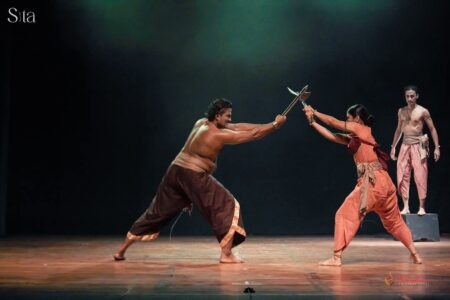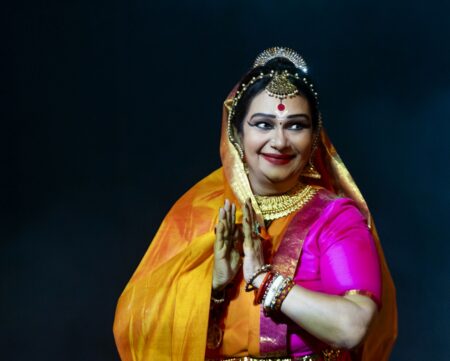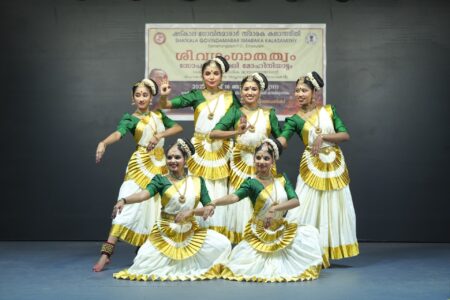
The writer asserts, a slew of treatises of yore and temple inscriptions are enough indications of the numerous dance forms staged in temples, the traditions of which might have influenced the evolution of Mohiniyattam.
In Kerala Devadasi was known by the general name Tevadichi which means “a woman who serves at the feet of god”. (Tevidichi = teva + adi + achi, teva = god, adi = feet, achi = woman). Their dance came to be called Tevadichiyattam or Tevidichi Koothu). In one of the Tiruvalla inscriptions (in Sasana No.I) there is an injunction which reads tevidichikalnalvarkai pantirunazhikku in the context of the Avani Onam festival. This inscription means that for four Tevidichis, 12 idangazhi-s (a measure of quantity) of rice should be given during this festival.
Till about 100 years ago, at Tripunithura, a Devadasi dance was performed in the temple at dusk called Tevidichiyattam or Tevidissi Koothu. In many of the Manipravala and a few Sanskrit works written in the second half of the 13th century and later, the heroines were good danseuses. In the long poem called Unniyadicharitam there is a reference to danseuses enacting dance-dramas on stages made of gold.
Adakamkondunirmmichazhakezhumarangatheri / nadakamadimevunnadikulam poliyumedam (This is the place where the community of danseuses live-the danseuses who dance on the beautiful stage made of gold).
Though there may be some exaggeration in such descriptions, they show the high status enjoyed by the dancers and the luxurious and ornate nature of the platforms used for honouring them. Similar descriptions of the stage can be seen in the poem Unniyachicharitam also.
Devadasis in Kerala texts
Unnichirutevicharitam is a Champu poem in Malayalam written either at the end of the 13th century or at the beginning of the 14th century A.D. The heroine, Unnichirutevi is the daughter of a famous dancer Unniyappilla of Tottuvaipalli family in the Chokiram village of South Malabar. The poem tells us how Devendra was infatuated by the great beauty and proficiency in dancing of Unnichirutevi and how he went to her house seeking her. Unnichirutevi’s grandmother Nangayayya was also a celebrated dancer. While describing her exceptional skill in dancing, the poet pays this glorious tribute to her: “When Nangayayya danced, she looked as if Lord Siva himself, assuming the disguise of a woman, was dancing after replacing the kalakooda poison in his throat with the nectar of music geetamritam”.
Even Devendra, eager to see her, expresses his doubt of being able to see her thus: “Is she, who is an ornament to the community of dancers, beautifying and preparing her body for a dance performance?” From this, it is clear that Unnichirutevi also was a professional dancer. Besides, it is mentioned in the poem that a special Koothambalam (theatre) was there for her performances.
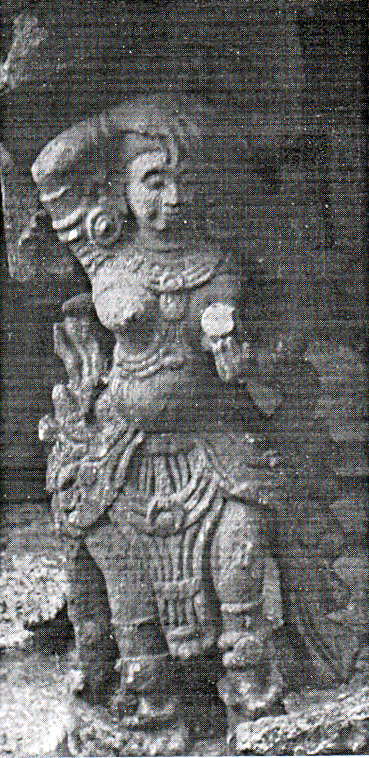
The heroine of Sukasandesam, another famous poem of the 14th century A.D., is a famous danseuse of Trikkanamatilakam (a temple near Kodungallur) named Rangalakshmy. It is also mentioned in the same poem that while she dances on the chitraranga (ornamented stage), she also dances at the same time in the chitharanga (minds) of the young men.
In Sivavilasa, (14th century) the author Damodara Chakyar makes the following laudatory remark on the dance performances made by accomplished danseuses every night at Kandiyoor Mahadevar Temple near Tiruvalla .
“The gods, gazing at the inspired performance of the adept danseuses, every night in the Siva temple at Kandiyoor, sit stunned, their faces lit up with delight and wonder. They can hardly be distinguished from the figures engraved on the walls of the dance-hall”.
Devadasi tradition in Kerala
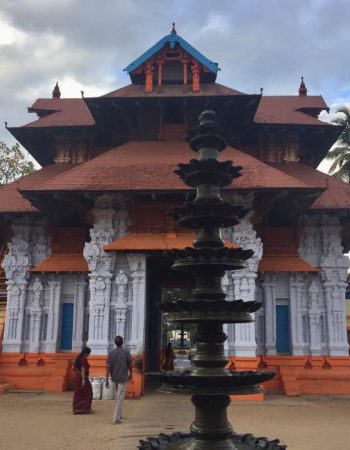
were Tevadichiyattam / Tevidichi Koothu used to be performed about 100 years ago.
Scholars are divided in opinion about the presence of Devadasi tradition in the temples of Kerala. Many scholars argue that Devadasi tradition, as found in the past centuries in the temples of Tamil Nadu, Karnataka and Andhra Pradesh was not prevalent in the Kerala region. The absence of records of any prominent Devadasi families who have carried on a dancing tradition forward like those found in Tamil Nadu largely agrees with such arguments.
However, some scholars argue that the subjugation of parts of southern Kerala by the Chola empire in the medieval period may have brought the Devadasi system to parts of southern Travancore. A devadasi cult may not have existed in Kerala, other than such percolation through the borders in the south and north. Nonetheless, all references in the literature and vast amounts of sculptural evidence present in temples throughout Kerala indicates the existence of a music and dance community across the region. They may have origins in the Nangiars or traditional temple performers. They may have been influenced by the folklore of the region and Devadasi influences from across borders. But, from all those testimonies it is clear that many of the temples of Kerala in the past had danseuses attached to them and frequent dance performances occurred in temples and courts of rulers and feudal chieftains. Those dance traditions have certainly laid cornerstones of indigenous dance forms like Mohiniyattam.
Assisted by Sreekanth Janardhanan


